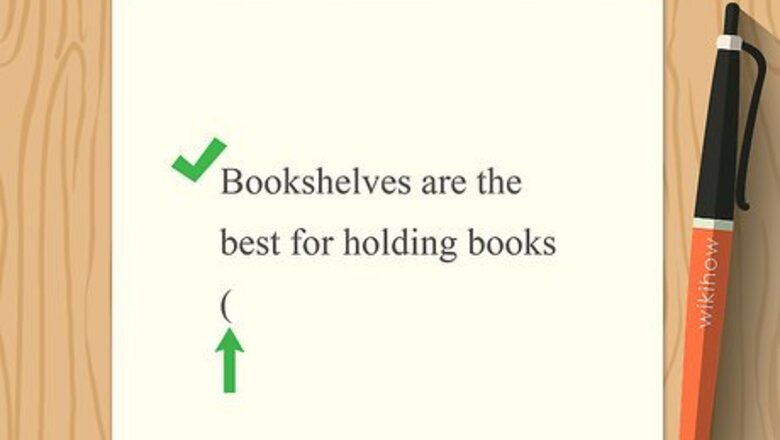
views
Creating an In-Text Citation
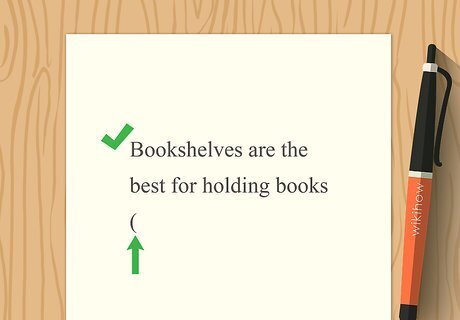
Put an open parenthesis before the punctuation in the sentence. The citation goes right after what you're citing, which could be before a comma or before the end period. You should cite anything that you paraphrase or quote. You'll start with an open parenthesis. Your citation will start out like this one: Bookshelves are the best for holding books ( On the other hand, you might write: In a study of this psychological trait ( In the second example, you're citing the study, so the citation comes directly after it.
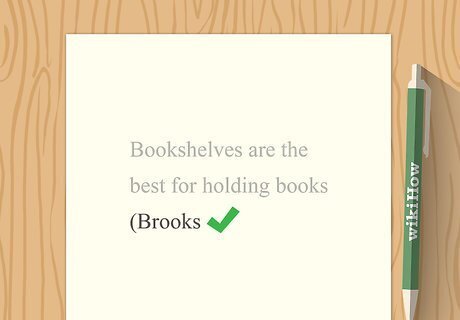
Add the author's last name. The author's last name goes directly after the open parenthesis with no space in between. However, you do put a space after the author's last name. Your citation might look like this one now: Bookshelves are the best for holding books (Brooks
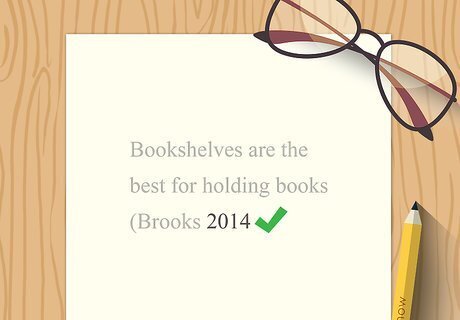
Put the year of publication after the space. The year of publication should be on the front or back of the title page. Just include the year, not a month or day. Your citation will look like this now: Bookshelves are the best for holding books (Brooks 2014
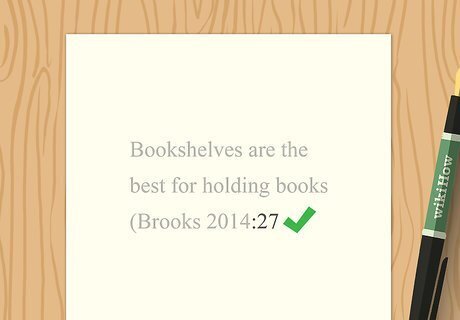
Use a colon to add a page number as needed. Add the page number when you quote or you refer to a passage from the text directly. Otherwise, it's not required, but it may still be helpful for the reader. Put a colon right after the year, then write in the page number with no spaces. For example, your citation might look this way: Bookshelves are the best for holding books (Brooks 2014:27
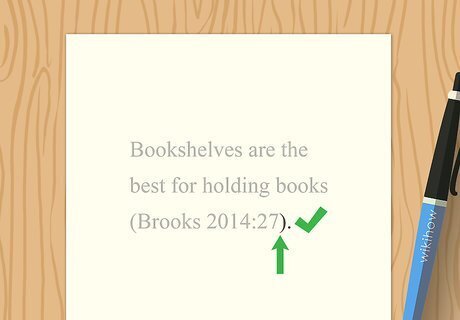
End the citation with a close parenthesis. Whether you end the citation right after the year or after the page number, put a close parenthesis to show you're finished with the citation. Place the sentence punctuation after the close parenthesis. Your completed citation will look like this: Bookshelves are the best for holding books (Brooks 2014). It may look like this instead: Bookshelves are the best for holding books (Brooks 2014:27).
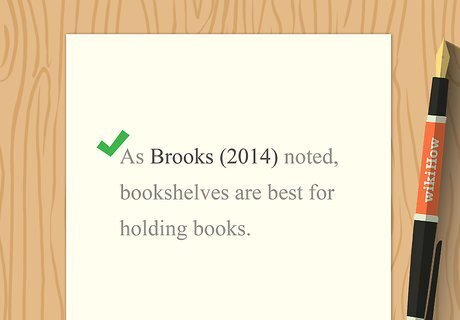
Skip the author's name in the citation if you use it in the sentence. If you introduce the idea using the author's last name, you don't need to repeat it in the citation. Just use the date or the date and the page number in parentheses directly after the author's name rather than at the end of the information. An example of this citation would look like this: As Brooks (2014) noted, bookshelves are best for holding books.
Making Your Reference List Entry
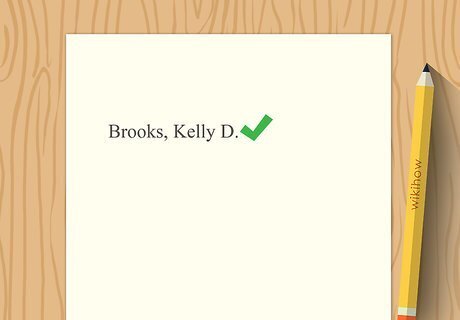
Start with the author's last name, then the author's first name. You need the author's last name to alphabetize your reference list page, so you place it first, followed by a comma. Use the author's first name after that, followed by a period. Add the author's full name, unless they use initials in the book. If the author includes a middle initial, use it as well. Your bibliographical citation will start out like this: Brooks, Kelly D.
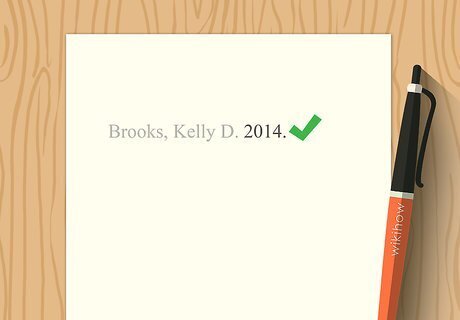
Put the publication year after the author's name. Leave a space after the period, then write in the year. Follow the year with another period. Your bibliographic entry will now look this way: Brooks, Kelly D. 2014.
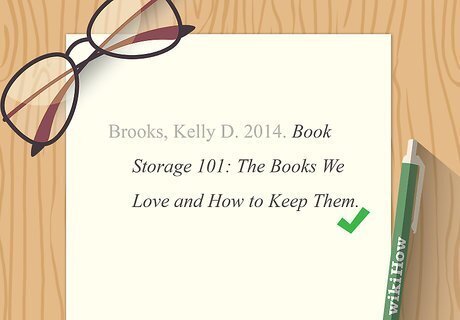
Add the title of the book in italics. Use the full title, including subtitles. If the book has a subtitle, separate it from the main title with a colon. Capitalize all important words in the title, but don't capitalize articles, conjunctions, and prepositions, unless they begin or end a title or subtitle. Follow the title with a period. For example, your entry might look like this: Brooks, Kelly D. 2014. Book Storage 101: The Books We Love and How to Keep Them.
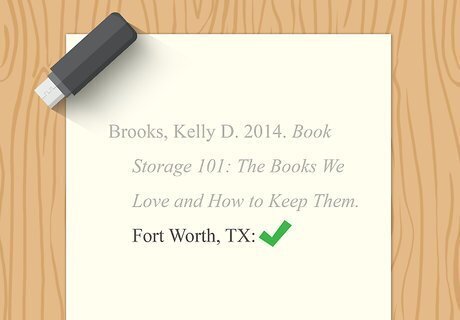
Put in the place of publication. You can find the publication city on the front or back side of the title page. Write down the city in the entry and add a comma and the state abbreviation if it's not well-known. Otherwise, you can just use the city name. Add a colon after the place of publication. For instance, your bibliographical entry might be like the following: Brooks, Kelly D. 2014. Book Storage 101: The Books We Love and How to Keep Them. Fort Worth, TX:
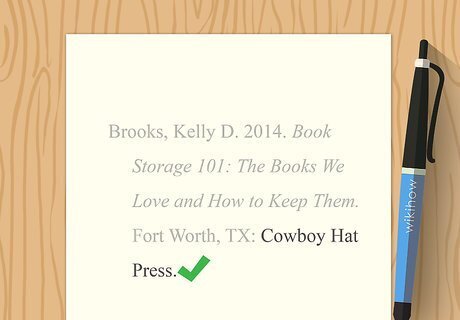
End with the name of the publishing company. Typically, you can find the publisher's name on the front or back of the title page. Sometimes, it's listed in both places. Put a period after the publisher to end the bibliographical entry. Your final citation will look like this: Brooks, Kelly D. 2014. Book Storage 101: The Books We Love and How to Keep Them. Fort Worth, TX: Cowboy Hat Press.











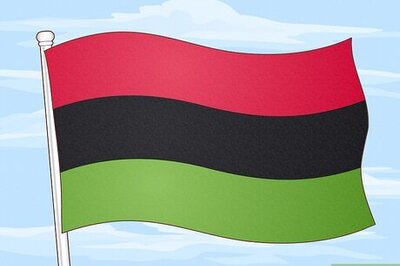

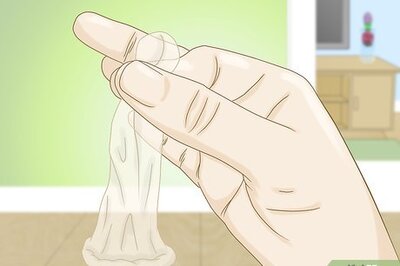





Comments
0 comment